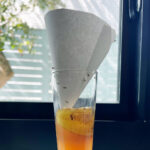When discussing presidential air travel, the iconic Air Force One immediately springs to mind. This symbol of American power and prestige is synonymous with the President of the United States. But what about Air Force Two? You might wonder, does the president ever fly on Air Force Two, or is it exclusively reserved for the Vice President? The answer, while perhaps surprising, reveals interesting aspects of presidential transportation and the hierarchy within the U.S. government’s aviation fleet.
Air Force One is the call sign for any U.S. Air Force aircraft carrying the President, but it typically refers to one of two highly customized Boeing 747-200B series aircraft. These planes are essentially flying White Houses, equipped with state-of-the-art communication, security, and defensive capabilities. They are designed to ensure the President can command the nation from anywhere in the world.
Air Force Two, conversely, is the call sign for any Air Force aircraft carrying the Vice President, but it most commonly denotes the Boeing C-32, a modified Boeing 757. While smaller and less iconic than Air Force One, Air Force Two is still a sophisticated aircraft capable of long-range travel and equipped with advanced communication and security features suitable for high-ranking officials. It primarily serves the Vice President, the First Lady, and occasionally, members of the Cabinet and Congress.
So, back to the central question: does the president ever utilize Air Force Two? The answer is yes, but it is relatively infrequent. While Air Force One is the primary mode of air transport for the President, there are circumstances where the President might opt for Air Force Two. These situations are often driven by logistical considerations or specific mission requirements.
One common scenario is when the President is traveling to smaller airports that cannot accommodate the massive Boeing 747 Air Force One. Air Force Two, being a Boeing 757, requires a shorter runway and is more versatile in accessing a wider range of airfields. This allows the President to reach more locations directly, particularly within the United States, without the need for complex ground transportation arrangements from a larger, more distant airport.
Another instance where a President might fly on Air Force Two is for specific, less formal trips. While Air Force One’s presence is a significant event, sometimes a lower profile approach is desired. Utilizing Air Force Two can offer a degree of discretion and reduced logistical footprint, suitable for domestic trips or less ceremonious occasions.
Furthermore, in situations where Air Force One is undergoing maintenance or is otherwise unavailable, Air Force Two serves as a capable and secure backup aircraft for presidential travel. This ensures that the President always has access to secure air transportation, regardless of the status of the primary aircraft.
In conclusion, while Air Force One remains the primary and most recognized aircraft for presidential travel, the President can and occasionally does fly on Air Force Two. This usually occurs for practical reasons such as accessing smaller airports, for less formal travel arrangements, or as a contingency when Air Force One is unavailable. Understanding the roles of both Air Force One and Air Force Two provides a clearer picture of the complexities and considerations involved in ensuring the President’s safe and efficient air transportation.

